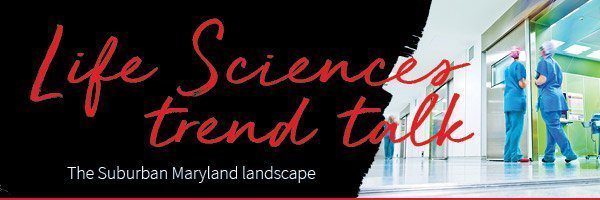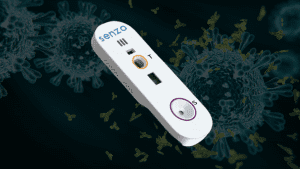
JLL Reports Suburban MD Has Become A Top 5 Life Sciences Cluster
Sharing this annual report update from JLL that includes some current figures on real estate, investment and employment for the BioHealth Capital Region.
With dynamic growth across key economic indicators, Suburban Maryland is now a top-five life sciences cluster, per JLL’s latest annual report.
Three key factors drove Maryland’s rise in the rankings:
- Venture capital funding
- Employment growth
- Real estate fundamentals
The growth in these categories, among others, has not only led to a higher ranking among peer regions but has brough sweeping changes within the market.

Venture capital funding totaled more than $550M over the past 12 months, placed into several high-growth companies. Among life sciences clusters, Maryland ranks 5th in this respect, receiving more VC funding than Raleigh-Durham, Philadelphia, and Seattle, among others. Maryland venture capital funding accounts for 2.8% of total venture capital placements nationally. Additionally, Maryland firms received over $600M in NIH funding. Notable funding recipients include VielaBio, NextCure, Vigene Biosciences, and Neuraly, with several other firms working on their first rounds of funding.
Maryland has seen a 5.8% increase in life sciences employment over the past 5 years. Nationally, Suburban Maryland’s employment growth ranks seventh. This rapid growth has expanded Suburban Maryland’s life sciences workforce to more than 40,000 workers. Those 40,000 life sciences professionals also represent 2.2% of overall private employment, a concentration that is on par with markets such as Philadelphia and Seattle. Additionally, robust tech transfer from Maryland’s universities and an accumulation of industry veterans in the business community have fostered one of the highest concentrations of life sciences firms in the nation, ranking 4th in JLL’s analysis.
Spurred along by strong fundamentals, Suburban Maryland’s life science real estate market has seen dynamic changes over the past year as vacancy remains at historic lows and property owners respond to the increasingly tight market with new supply and higher rental rates. The I-270 life sciences corridor has seen over 1M s.f. of demand since 2016 as firms relocate to and grow within the market, bringing overall occupancy to almost 95%. With high demand and limited availabilities, developers have responded by breaking ground on the first new life sciences development projects since 2013. As a result, rental rates in the core of Maryland’s life sciences market rose by 8.1% with rates for new construction approaching $40.00 p.s.f. NNN.
Looking ahead
Going forward, we expect Maryland’s strong pace of growth to continue. Low vacancy rates across the state have induced many owners and developers to introduce new ground-up construction and office-to-lab conversions that will enable new firms to enter the market and existing firms to grow within it. The momentum has spread across nearby metro Baltimore as well. The University of Maryland, Baltimore is moving forward on plans for a $200 million expansion of their biopark with a 10-story, 300,000-s.f. lab building, and Thrive Earlier Detection, a newly launched company utilizing Johns Hopkins developed technology, raised $110 million in funding earlier this summer. Furthermore, this November will mark the delivery of a 220,000 s.f. state-of-the-art facility at the Universities at Shady Grove which will further integrate the University System of Maryland’s top-tier STEM programs and talent with the state’s life sciences employer-base. With a strong pool of both current and future talent, high quality lab supply, and a well-established business community, Maryland’s life sciences industry is poised to see more growth and continue its current upward trajectory.

Site selection
Lease negotiation
Strategic planning
Municipal economic incentives
Construction management
© 2019.Jones Lang LaSalle. All rights reserved.
- About the Author
- Latest Posts
Over the past 11 years, Chris has grown BioBuzz into a respected brand that is recognized for its community building, networking events and news stories about the local biotech industry. In addition, he runs a Recruiting and Marketing Agency that helps companies attract top talent through a blended model that combines employer branding and marketing services together with a high powered recruiting solution.





